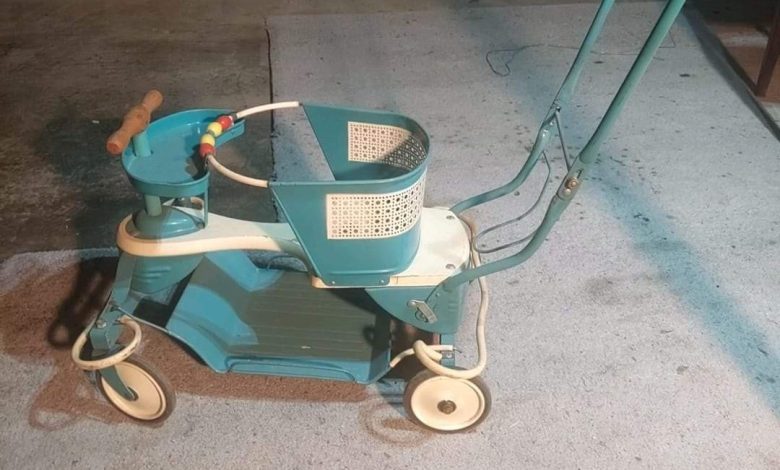Rolling Back Time The Evolution of Children’s Walkers

ADVERTISEMENT
Rolling Back Time: The Evolution of Children’s Walkers
Introduction
The design and functionality of children’s toys and aids, such as walkers, have seen significant transformations over the decades. The vintage walker in the image, with its sturdy metal frame and playful design, offers a snapshot into the past, highlighting how these childhood staples have evolved not only in design but also in safety and educational value. This exploration into the history of children’s walkers sheds light on broader shifts in perceptions of childhood, parenting, and safety.
Main Content
- Early Designs and Materials: Historically, children’s walkers were simple, sturdy devices made from metals and woods, focusing more on durability than on safety or aesthetics. The walker shown in the image reflects a design that predates contemporary concerns about materials and safety standards, illustrating a period when robustness was often prioritized over ergonomic design.
- Cultural Significance: Walkers have played a significant role in children’s early mobility and independence. In many cultures, the first steps a child takes are celebrated, and devices like walkers have been integral in supporting this crucial developmental stage. The presence of such items in homes underscores the universal desire among parents to aid their children’s growth and exploration.
- Shifts in Safety Standards: Over the years, the focus has shifted significantly towards the safety and developmental appropriateness of children’s products. Modern walkers are often equipped with a wide array of safety features like wheel locks, non-toxic materials, and designs that prevent tipping. These changes reflect a growing awareness of child safety and developmental psychology.
- Educational Value: Today, children’s walkers often come with integrated educational toys that encourage cognitive development, sensory stimulation, and motor skills. This is a marked shift from the more utilitarian designs of the past, like the one depicted, which focused purely on mobility.
- Nostalgia and Collectibility: Items like the vintage walker are sought after by collectors and nostalgia enthusiasts who appreciate them for their aesthetic and historical value. They evoke memories of past childhoods and are often restored and preserved as heirlooms or showcased in collections.
Conclusion
The evolution of children’s walkers from simple aids for mobility to complex tools designed for safety and education mirrors broader changes in society’s approach to parenting and child care. As we reflect on items like the vintage walker, we gain insights into the past priorities and the progress that has been made in ensuring the well-being and development of the youngest members of our societies. This journey through the history of a simple childhood aid reveals much about our changing world and the ongoing efforts to better the early stages of human life.
ADVERTISEMENT



